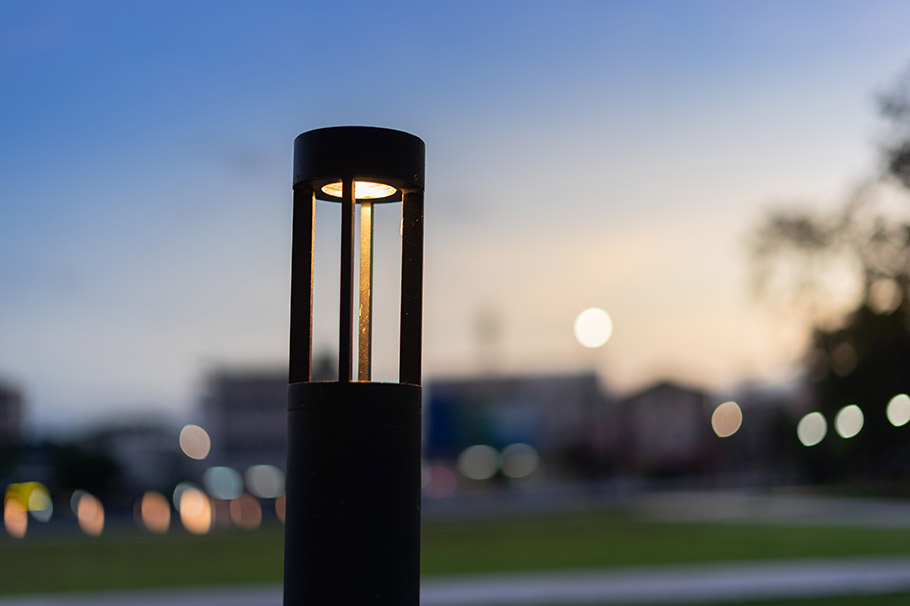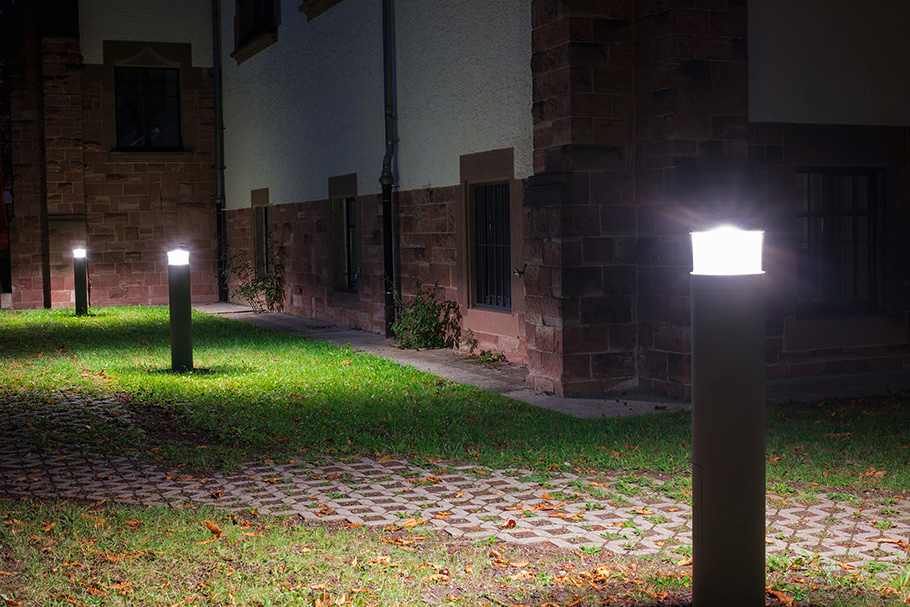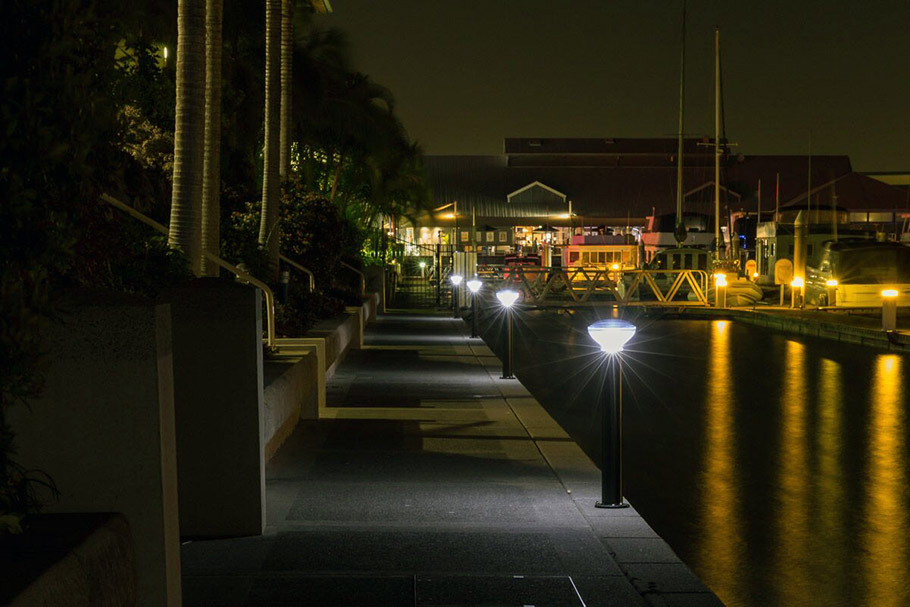Decorative bollards with lights add ambiance to landscapes while improving comfort and safety
Why choose lighting bollards?
Architectural lighting bollards create welcoming public spaces for walkers and cyclists through low-impact, pedestrian-level, localized light, improving pedestrian comfort and safety and reducing light pollution.
Why does lighting matter?

Street lighting has been a concern for cities and towns since ancient times. In ancient Rome, slaves were specially trained to light oil lamps outside of Roman homes, making sure they stayed lit throughout the night to protect citizens from dangers lurking in the dark. In ancient China, streetlights in Beijing were fueled by natural gas transported in bamboo pipes as early as 500 BC. Electric lighting revolutionized cities around the world, extending time available for work and leisure.
Lighting public spaces remains an important consideration for cities and towns today. Good public street lighting increases an area’s walkability, boosting physical activity and reducing social isolation. Creating welcoming, walkable neighborhoods is a priority for urban planners and municipal governments globally. There is generally good public support for improved public street lighting projects.
Lighting by design
Lighting choices can have a significant impact on how people perceive and experience shared spaces, with important implications for how that space is ultimately used. It’s tough to beat bollard lighting for creating just the right mix of comfortable ambient light in well-designed community spaces. Well placed architectural bollard lighting produces a feeling of safety without over-lighting an area. Low-glare, pedestrian-level lighting from architectural lighting bollards can blend in or dramatize existing or planned landscaping and architectural features, depending on placement. Architectural bollard lights are great for creating a natural balance of lit and unlit areas. Some decorative bollards with light cut-offs can offer soft downlighting for pathways and walkways, gently guiding walkers without interrupting their view of the night sky.
How does lighting improve pedestrian safety?

Most pedestrian deaths occur at night. Well-placed, consistent street lighting can help prevent pedestrian fatalities by improving visibility, giving motorists more time to react and avoid a potential collision. The impact of street lighting on crime reduction is hotly debated, but there’s no question that people feel safer when public spaces are appropriately lit. Adequate lighting remains an important principle in crime prevention through environmental design (CPTED). Decorative bollards with lights can help people feel safe in public spaces by gently illuminating pathways and sidewalks without the intrusive glare of traditional overhead streetlights.
What is light pollution?

Light pollution is the overuse of artificial light which can negatively affect people and wildlife by disrupting wake-sleep patterns and altering natural habitats. Over-lighting neighborhoods also creates unnecessary energy demands, increasing a community’s carbon emissions. Concerns about light pollution are leading municipalities and city planners to think more carefully about how we light public spaces. Traditional street lighting wastes energy lighting the night sky, wasting light and contributing to light pollution. Architectural lighting bollards offer an effective solution by combining illumination and route-management. Light from architectural lighting bollards is below eye-level, reducing glare on lit pathways and sidewalks. Shielded lights can reduce sky glow. Decorative bollards with lights offer low-impact, localized light with minimal light-spread to avoid light trespass (or nuisance light); they are the ideal choice for lighting trails, walkways, plazas, campuses, and parks. Architectural lighting bollards are frequently included in municipal outdoor lighting strategies aimed at reduce light pollution and lowering energy demands.
Types of decorative bollards with lights

Architectural lighting bollards can be hard-wired or solar powered. Hard wired decorative bollards with lights require access to electrical power, usually through underground wiring. They are reliable under all weather conditions but have an ongoing energy cost. Solar powered decorative bollards with lights don’t need access to an electrical grid and are therefore an ideal choice for green building projects. They are also easier to install than hard-wired lighted bollards. Solar powered architectural lighting bollards have the added benefit of being low maintenance, with lithium batteries that last ten years; they are unaffected by power outages or disruptions.
Both solar and hard-wired bollards with lights are available in a variety of designs and finishes.
